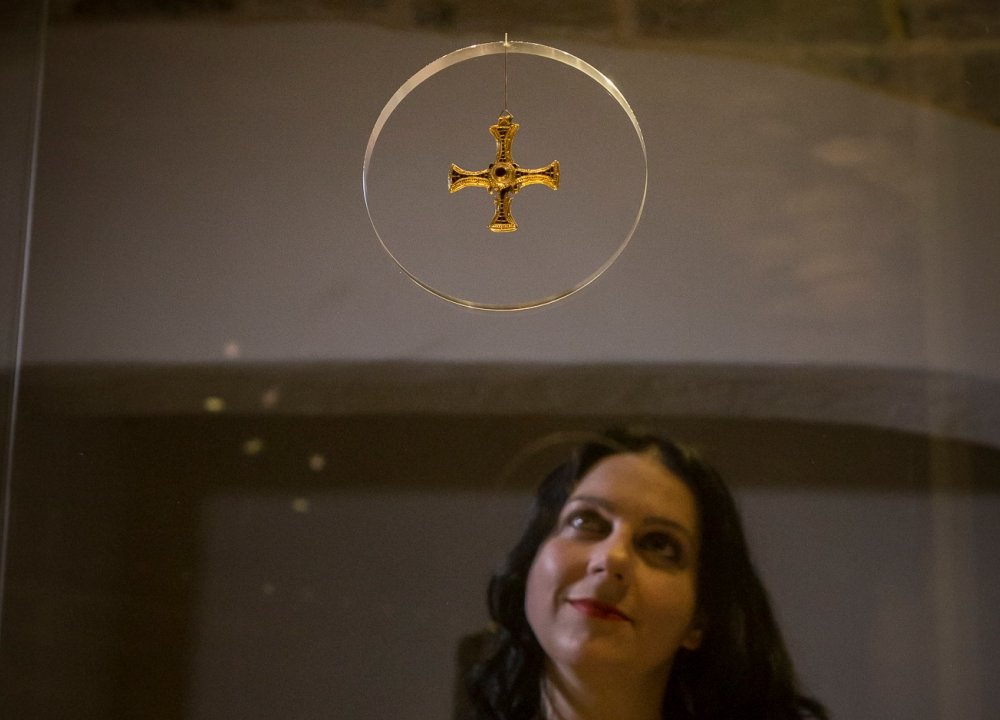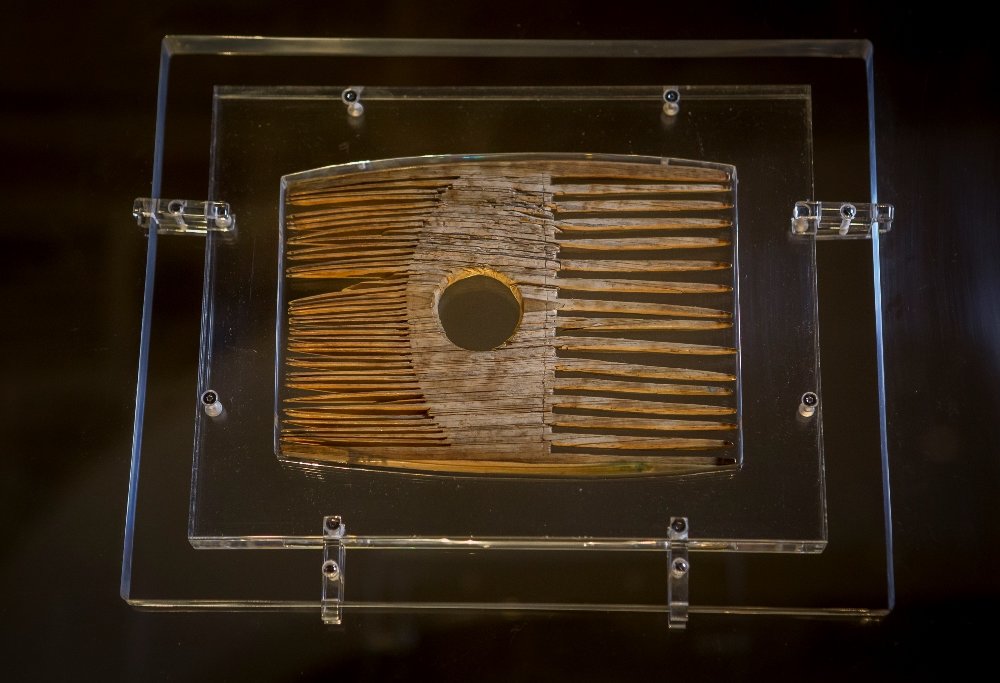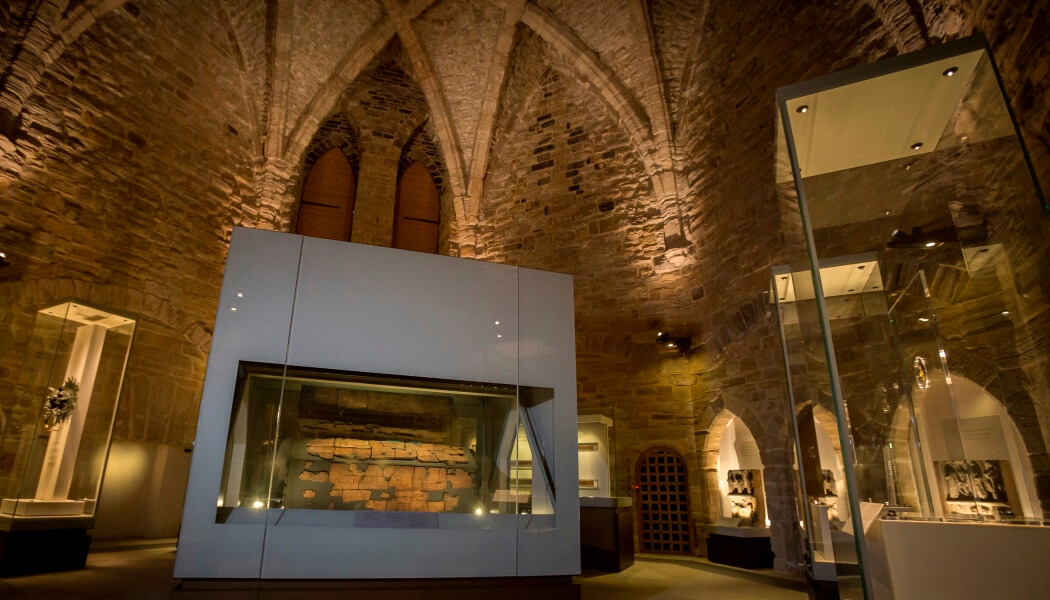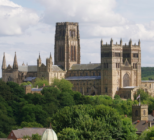The Treasures of St Cuthbert, are a rare set of Anglo Saxon artefacts, including the gold and garnet Pectoral Cross, the symbol of Durham Cathedral and were revealed at the weekend within the Open Treasure gallery. The Open Treasure project was a £10.9m programme unveiled in July 2016 that transformed some of the Cathedral’s most historic spaces into an exhibition route, taking in the 14th Century Monks’ Dormitory and the medieval Great Kitchen, alongside purpose-built gallery spaces. The project received a £3.9m HLF grant and tells the story of Christianity in the North of England, monastic life in Durham and the life of the Cathedral today.

The distinctive octagonal, vaulted ceiling of the Great Kitchen provides the perfect backdrop for the collection – previously on display in the cathedral’s undercroft and in storage for the past six years – that has been made possible following 12 months of environmental monitoring.
“The launch of the Treasures of St Cuthbert marks a new phase in the life of Durham Cathedral and its exhibition experience Open Treasure,” said the Dean of Durham, Andrew Tremlett. “It is very fitting that the final jewel in the crown of Open Treasure is centred on St Cuthbert, in whose honour Durham Cathedral was built.”
The building of Durham Cathedral commenced in 1093 and took around 40 years to complete. It replaced a Saxon cathedral built by the Community of St Cuthbert after it arrived in Durham in 995 following its flight from the ‘Holy Island’ of Lindisfarne 80 miles north of Durham. The Cathedral existed as a Benedictine Monastery until 1539 when it became one of the Church of England’s major Cathedrals. It continues to be a focus for pilgrimage and attracts over 750,000 visitors each year from all over the world.

Following Cuthbert’s death in 687, his remains were buried on Lindisfarne. When the coffin was opened eleven years later Cuthbert’s remains were found not to have decayed, with his clothes apparently still in pristine condition. Following this discovery, St Cuthbert’s remains and relics became a focal point for veneration and pilgrimage, something which continues today.
St Cuthbert’s original Anglo-Saxon wooden coffin, made in 698 and recovered when his tomb was opened in 1827, forms the centrepiece of the display. Images of Christ, the Virgin, apostles and archangels are still visible on these incredibly well preserved oak fragments, making this one of the most important wooden artefacts to have survived since before the Norman Conquest.
“A place of worship for thousands and a spectacular attraction drawing visitors from near and far to the city, Durham Cathedral is a heritage treasure in the North East,” said Jim Cokill, Member of the North East Committee for the Heritage Lottery Fund. “The Treasures Of St Cuthbert and the Open Treasure Exhibition will not only boost the Cathedral’s Continuing popularity but will also keep its visitors at the heart of its heritage.”








